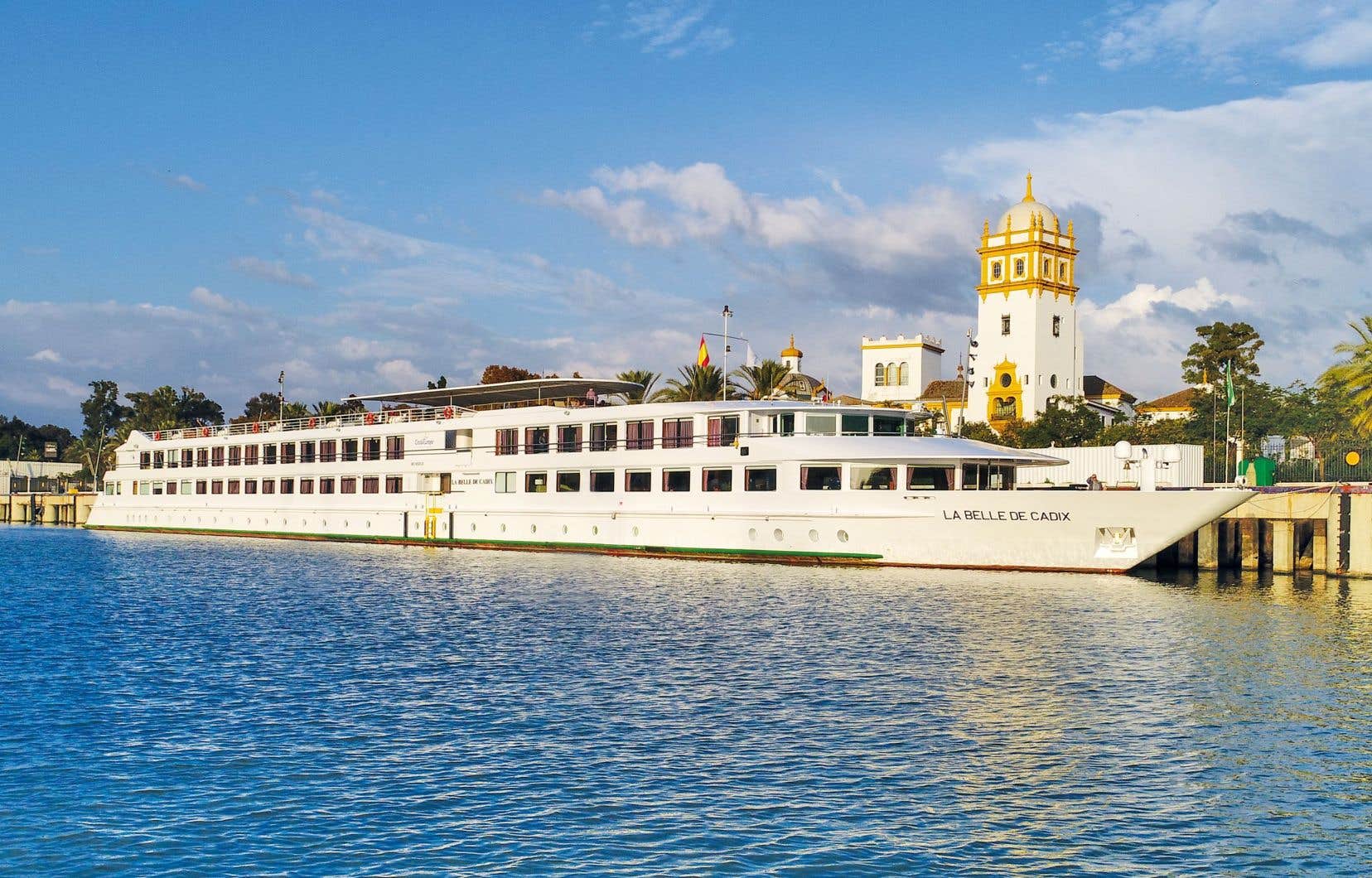This text is part of the special Pleasures notebook
Sailing on the calm waters of the Guadalquivir aboard The Beauty of Cadiz, you can experience a fascinating journey to the heart of Andalusia. Cities with a rich heritage reveal themselves and tell us their history against a backdrop of flamenco.
Boarding takes place at the port of Seville, aboard the elegant ship The Beauty of Cadiz, of CroisiEurope, our means of transport to certain key cities. It is also our air-conditioned refuge between excursions and navigation, beneficial breaks sheltered from the torrid Andalusian sun.
Equipped with 88 spacious cabins, this boat has a special feature: it can sail on sea as well as on river. A small part of the journey will be on the Atlantic Ocean, near the Portuguese coast.
The journey from the ports of call to the excursions is by coach. The visits are optional. However, they make this itinerary one of the most memorable experiences.
Spotlight on some stopovers.
Seville
The Andalusian capital is the starting and finishing point of our cruise. In the Middle Ages, the Moors occupied Spain for almost 800 years, leaving behind architectural splendors. Along with Cordoba and Granada, Seville is part of the Andalusian Golden Triangle, where many monuments belong to the Moorish heritage. The main port to the New World in the 15th centurye century, the city also experienced its heyday under the Spanish Catholic monarchy.
The guided tour of the historic heart of Seville allows you to admire the Alcazar, one of the oldest inhabited palaces in Europe, a UNESCO World Heritage Site. It is, along with the Cathedral, one of the wonders not to be missed in Seville.
The monument bears witness to several eras. In 712, the Moors built a settlement there for their leaders and surrounded by walls. Peter Iernicknamed Peter the Cruel, later had the old Almohad alcazar rebuilt to make it a royal residence in the 14th century.e century. There you can see a range of styles, with main elements of Mudejar and Renaissance influences. Right next door, we will also visit the cathedral (the largest Gothic architecture in Spain), built in the 15th centurye century on an ancient Almohad mosque. This immense building houses the tomb of Christopher Columbus.
Their location is in the Santa Cruz neighborhood, once Seville’s Jewish quarter that today is popular for its lively atmosphere, sidewalk cafes and artisan shops.
Huelva
The first day of sailing, with the story of Christopher Columbus and the discovery of the New World as its theme, will take us to Huelva. In 1492, the explorer managed to carry out his project of a voyage to the Indies thanks to a priest from the Monastery of La Rabida, who is said to have pleaded on his behalf with the Queen of Spain. The place and the Caravels Park, where replicas of Columbus’ three ships are exhibited, are on the program of the visit.
Cadiz
The dome of the old cathedral of Cadiz and the pastel roofs of the buildings seem to come out of a Renaissance painting. Even our ship, immaculate white, sparkles in this light, and we understand its name better The Beauty of Cadiz.
Founded 3,000 years ago by the Phoenicians, the city is the oldest city in the West. It is located on a rock in the middle of the sea, attached to the continent by a narrow isthmus and surrounded by ancient fortifications. Cadiz is also recognized as one of the high places of flamenco, where the best tablaos (cabarets). We will have the opportunity to attend a captivating show, where the singing (sing jondo) mixing with the rhythmic sounds of the guitar ignites the fervor of the dancers.
Jerez de la Frontera
The cruise will also be an opportunity to get acquainted with sherry wine, a controlled designation of origin produced in particular in the towns of El Puerto de Santa Maria and Jerez de la Frontera. A tour of both towns is planned as well as a visit to Bodega Osborne, one of the oldest houses in Jerez still in operation since 1772. Its emblematic bull underlines that the place is also known for its wild cattle breeding.
Grenade
The boat having sailed at night, we return the next day to Seville. From there, we will leave at dawn by coach to Granada. These three hours of driving will allow us to visit one of the most beautiful historical sites in Andalusia. The Alhambra with the Generalife was the summer residence of the Nasrid princes. It remains majestic with its bucolic gardens, its pools and its typical patios. This medieval jewel is perched on a hill at the foot of the Sierra Nevada, testifying to the time when Granada was the last Muslim stronghold in Spain, until 1492. Both monuments are listed as UNESCO World Heritage Sites.
Cordoba
The last excursion of the trip is two hours from Seville, on the north bank of the Guadalquivir. Cordoba had its time of glory in the Middle Ages, even becoming the capital of Al-Andalus under the reign of Caliph Al-Rahman Ier. Today it reveals its attractions to us, including its mosque-cathedral, a fine example of Umayyad art, with its architecture and its 850 columns. The Mosque was transformed into a cathedral in 1236, during the Reconquest. The monument was classified as a UNESCO world heritage site in 1984.
A short stroll then through the streets of the old Jewish quarter, 1000 years old, will seduce you with its typicality, its whitewashed houses and its magnificent flower-filled patios.
For our last night on board, we will enjoy a delicious paella, an emblematic dish of Spain, masterfully prepared by the chef and his team.
The journalist was the guest of CroisiEurope.
This content was produced by the Special Publications Team of Dutyrelevant to marketing. The writing of the Duty did not take part in it.
